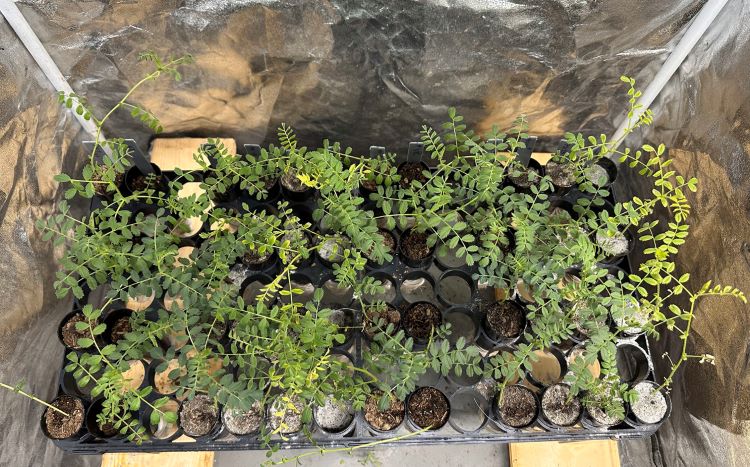As humanity returns to the Moon in the next few years, they’re going to need water to survive. While resupplies from Earth would work for a time, eventually the lunar base would have to become self-sustaining? So, how much water would be required to make this happen? This is what a recently submitted study hopes to address as a team of researchers from Baylor University explored water management scenarios for a self-sustaining moonbase, including the appropriate location of the base and how the water would be extracted and treated for safe consumption using appropriate personnel.
Continue reading “How Much Water Would a Self-Sustaining Moonbase Need?”Chickpeas Grown in Lunar Regolith Are Stressed but Reach Maturity

A recent preprint investigates how chickpeas have been successfully grown in lunar regolith simulants (LRS), marking the first time such a guideline has been established not only for chickpeas, but also for growing food for long-term human space missions. This study was conducted by researchers from Texas A&M University and Brown University and holds the potential to develop more efficient methods in growing foods using extraterrestrial resources, specifically with NASA’s Artemis program slated to return humans to the lunar surface in the next few years.
Continue reading “Chickpeas Grown in Lunar Regolith Are Stressed but Reach Maturity”What is ISRU, and How Will it Help Human Space Exploration?

As Artemis 1 prepares for its maiden launch with the goal of putting astronauts back on the Moon’s surface within the next few years, the next question is how will astronauts live and survive its surface? Will we constantly ferry all the necessary supplies such as water and food from Earth, or could astronauts learn to survive on their own? These are questions that a discipline known as ISRU hopes to answer both now and in the years to come. But what is ISRU, and how will it help advance human space exploration as we begin to slowly venture farther away from the only home we’ve ever known?
Continue reading “What is ISRU, and How Will it Help Human Space Exploration?”With Martian air, Dirt, and Sunshine, It Should be Possible to Make Iron on Mars

When the first humans reach Mars, they’ll probably live in habitats that were there ahead of time or in habs made from their landers. Eventually, though, if people are going to settle on Mars in large numbers, they’ll need to become self-sufficient. A group of researchers at Swinburne University in Melbourne, Australia is looking at ways to make it happen. Their goal is in-situ resource utilization on the planet for solutions to building out the materials needed for Mars cities. They’ve come up with a proposal to produce metals for use on Mars, using only what’s available on the planet. It’s the first detailed study of its kind focused on metal production at another world. It has further implications for colonies on the Moon, as well.
Continue reading “With Martian air, Dirt, and Sunshine, It Should be Possible to Make Iron on Mars”Chitin Could be the Perfect Building Material on Mars
It’s hard to deny that we’re heading for a future with a human presence on Mars. But to develop sustained presence, there are an enormous number of technical problems to be worked out. One of those problems concerns manufacturing and building.
We can’t send everything people will need to Mars. We’ll need some way to build structures, and tools and other things.
Continue reading “Chitin Could be the Perfect Building Material on Mars”

